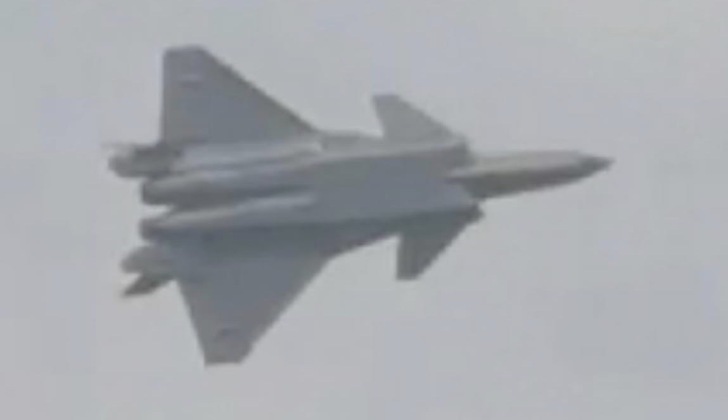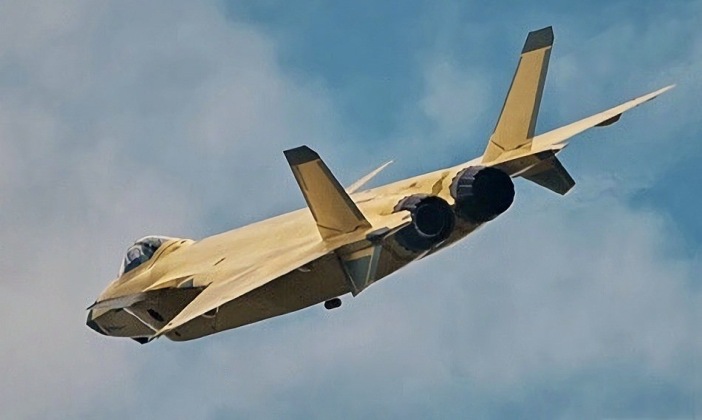News
First Clear Look at China’s J-20 Stealth Fighter Testing Revolutionary WS-15 Engine
On April 5 the first images were published clearly showing the J-20 fifth generation fighter flight testing WS-15 next generation engines. The fighter was first seen flying with the engine in January 2022, with multiple further sightings having been made since, although all images before April 2023 were of poor quality and left much to speculation. While it was confirmed that a J-20 prototype has been flight testing the WS-15 it is now known that the aircraft is the second prototype – airframe number 2012. Whether other prototypes have also been used to flight test the WS-15 remains uncertain. Six J-20 prototypes appeared from October 2012 until November 2015, with these having been preceded by two technology demonstrators which appeared from December 2010. No. 2012 was the second prototype and the fourth overall pre production airframe. With serial production J-20s being delivered to the Chinese People’s Liberation Army (PLA) Air Force from late 2016 using stopgap Russian AL-31FM2 engines, which were subsequently replaced by the WS-10C from mid 2019, the WS-15 has been referred to as bringing the fighter to its “ultimate form” and was the powerplant the aircraft was intended to integrate from the very beginning of the program.

Development of the WS-15 has from the outset of the J-20 program in the 1990s been expected to be the most challenging part of development, with only the United States having developed engines with comparable performances while promising Soviet efforts under the AL-41F program collapsed soon after the state disintegrated. The WS-15 is estimated to have a thrust with afterburners of approximately 19 tons, which will provide the J-20 with more thrust than any other fighter class in the world. The engine’s protracted development has been typical of such programs, with the rival American F119 engine having taken over 25 years to move from a design stage to readiness for the U.S. Air Force. The F119 powers America’s own fifth generation twin engine air superiority fighter the F-22 Raptor and has a thrust of 17.5 tons. The F-22 uses avionics much older than those of the J-20 or the newer single engine F-35 and due to a range of issues saw orders given to terminate production given less than four years after it entered service in 2009 with a very early retirement from the Air Force beginning in 2023. The F-22 program’s significant shortcomings have left the J-20 without a serious competitor in the heavyweight fighter range among aircraft of its generation.

The appearance of a J-20 flight testing a WS-15 engine closely follows the announcement by an Aero Engine Corporation of China (AECC) official in late March that the new powerplant had entered serial production, indicating that the WS-10C will be phased out and deliveries of airframes with the new powerplants could begin in the latter half of 2024. The engine is expected to make the J-20 far more manoeuvrable, while providing significantly more energy for onboard sensors and other avionics and potentially powering future directed energy weapons. The J-20 already has a far higher endurance than any Western fighter, with the WS-15 expected to extend this significantly due to its greater fuel efficiency. Much higher supersonic speeds without using afterburners are also expected to be facilitated, where the WS-10C provided the ability to reach only low supersonic speeds without afterburners. A new J-20 variant first seen in December 2022 with improved stealth features is thought to have been modified to make better use of the new powerplant.
The J-20 entered full scale production in late 2021 and is produced in greater numbers than any other fighter class in the world aside from the much lighter single engine J-10C and American the F-35, with many estimates placing production numbers at over 40 per year. It is one of just two post fourth generation fighters both in production and fielded at squadron level strength alongside the F-35, with the two having had their first encounter confirmed in March 2022 over the East China Sea, which makes it a particularly high profile weapons program as well as a highly prestigious one for China’s combat aviation industry.












